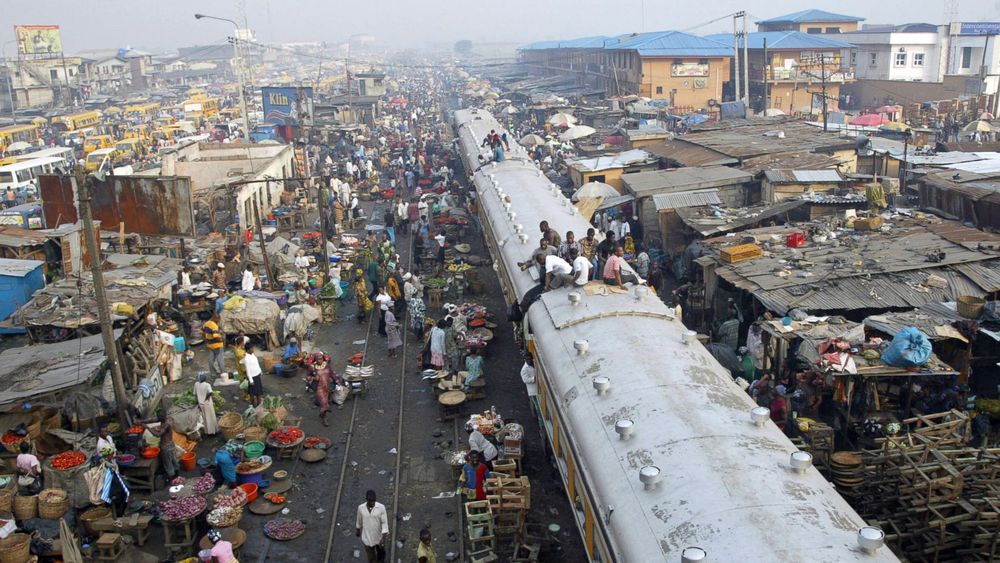Nigeria is situated in the West African region and lies between longitudes 30 and 140 and latitudes 40 and 140 . It has a land mass of 923,768 sq. km. It is bordered to the north by the Republics of Niger and Tchad; it shares borders to the west with the Republic of Benin, while the Republic of Cameroun shares the eastern borders right down to the shores of the Atlantic Ocean which forms the southern limits of Nigerian Territory. The about 800km of coastline confers on the country the potentials of a maritime power. Land is in abundance in Nigeria for agricultural, industrial and commercial activities.
Weather
Temperatures across the country is relatively high with a very narrow variation in seasonal and diurnal ranges (22-36°C). There are two basic seasons; wet season which lasts from April to October; and the dry season which lasts from November till March. The dry season commences with Harmattan, a dry chilly spell that lasts till February and is associated with lower temperatures, a dusty and hazy atmosphere brought about by the North-Easterly winds blowing from the Arabian peninsular across the Sahara; the second half of the dry season, February – March, is the hottest period of the year when temperatures range from 33 to 38°C. The extremes of the wet season are felt on the south-eastern coast where annual rainfall might reach a high of 330cm; while the extremes of the dry season, in aridity and high temperatures, are felt in the north, third of the land mass.
People
Nigeria is famous for her huge population of about 110 million people – the largest national population on the African continent. This population is made up of about 374 pure ethnic stocks. Three of them Hausa, Ibo and Yoruba are the major groups and constitute over 40 per cent of the population. In fact, about 10 ethnic/linguistic groups constitute more than 80% of the population: the other large groups are Tiv, Ibibio, Ijaw, Kanuri, Nupe, Gwari, Igala, Jukun, Idoma, Fulani, Edo, Urhobo and Ijaw. The gender divide of Nigeria’s population, as indicated by the last census in 1991, reflects an unusual inbalance in favour of male dominance; 51% male : 49% female.
Education
Due to a massive expansion in the education sector in the last two decades, the coloration and quality of the Nigerian work force has changed to include a large corps of highly trained personnel in mechanical, civil, electrical, electronics, chemical and petroleum engineering and bio-technics. There are at present over 30 Federal and State Universities, some of them specialist – Technology and Agriculture. In addition there are at least 20 Federal and State Polytechnics. Over 70,000 graduate in various disciplines from these institutions every year. Disciplines, apart from pure sciences, engineering and technologies include social sciences, business studies (management, banking and finance), architecture, environment and urban management studies. Also, a sizeable Nigerian population has been and is being trained outside the country, in some of the best colleges in the United States, Canada, United Kingdom, Germany, France, Russia, Japan and China. Every year, about 2,000 of these Nigerians return home to seek employment or accommodation within the economy. For the less skilled and unskilled labour, the country depends on the primary and secondary school systems whose annual enrolments are over 3.5 million and 1.5 million, respectively.
In line with the rainfall distribution – a wetter south and a drier northern half, there are two broad vegetation types: Forests and Savanna. There are three variants of each, running as near parallel bands east to west across the country. Forests, Savanna, Saline water swamp, Guinea Savanna, Fresh water swamp, Sudan Savanna, Tropical (high) evergreen, Sahel Savanna, and Rainforest There is also the mountain vegetation of the isolated high plateau regions on the far eastern extremes of the country (Jos, Mambilla, Obudu). The savanna, especially Guinea and Sudan, are the major grains, grasses, tubers, vegetable and cotton growing regions. The Tropical evergreen rain forest belt bears timber production and forest development, production of cassava; and plantation growing of fruit trees – citrus, oil palm, cocoa, rubber, among others
Government
The Federal Republic of Nigeria consists of thirty-six states, and the administrative headquarters and capital city is Abuja located in the Federal Capital Territory, which is geographically situated in the middle of the country. Effective participation in governance by all adults is assured through the sharing of power, revenue and responsibilities between the three tiers of government, i.e. the Federal Government, the State Governments and the various Local/Municipal Councils of the federation
Economy
With a population of over 100 million people, Nigeria is obviously the largest market in sub-Saharan Africa with reasonably skilled and potential manpower for the efficient and effective management of investment projects within the country. It is well connected by a wide network of motorable all-season roads, railway tracks, inland waterways, maritime and air trans-portation. Nigeria’s economy could be aptly described as most promising. It is a mixed economy and accommodates all comers, individuals, corporate organisations and government agencies, to invest in almost all range of economic activities.
Since 1995, the Government has introduced some bold economic measures which have had a salutary effect on the economy by halting the declining growth in the productive sectors and putting a stop to galloping inflation; they have reduced the debt burden, stabilised the exchange rate of the naira and corrected the balance of payments disequilibrium. In the 1995 and 1996 budgets, Government put in place some fiscal measures which addressed the exchange rate regime and the capital flight issue which hitherto inhibited project planning and execution. The policy of expanded production through guided deregulation paid off in 1996 when the economy recorded a real growth of 3.2% of GDP. The rate of inflation declined appreciably from the high seventies to the low twenties.

























